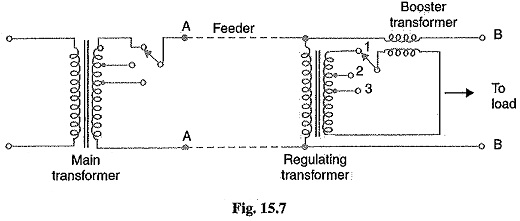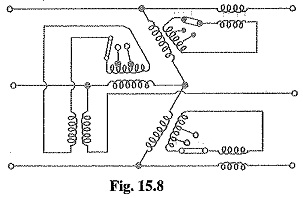Booster Transformer:
Sometimes it is desired to control the voltage of a transmission line at a point far away from the main transformer. This can be conveniently achieved by the use of a Booster Transformer as shown in Fig. 15.7. The secondary of the booster transformer is connected in series with the line whose voltage is to be controlled.
The primary of this transformer is supplied from a regulating transformer fitted with on-load tap-changing gear. The booster transformer is connected in such a way that its secondary injects a voltage in phase with the line voltage.
The voltage at AA is maintained constant by tap-changing gear in the main transformer. However, there may be considerable voltage drop between AA and BB due to fairly long feeder and tapping of loads. The voltage at BB is controlled by the use of regulating transformer and booster transformer.
By changing the tapping on the regulating transformer, the magnitude of the voltage injected into the line can be varied. This permits to keep the voltage at BB to the desired value.
This method of voltage control has three disadvantages.
Firstly, it is more expensive than the on-load tap-changing transformer.
Secondly, it is less efficient owing to losses in the booster and thirdly more floor space is required.
Fig. 15.8 shows a three phase booster transformer.

